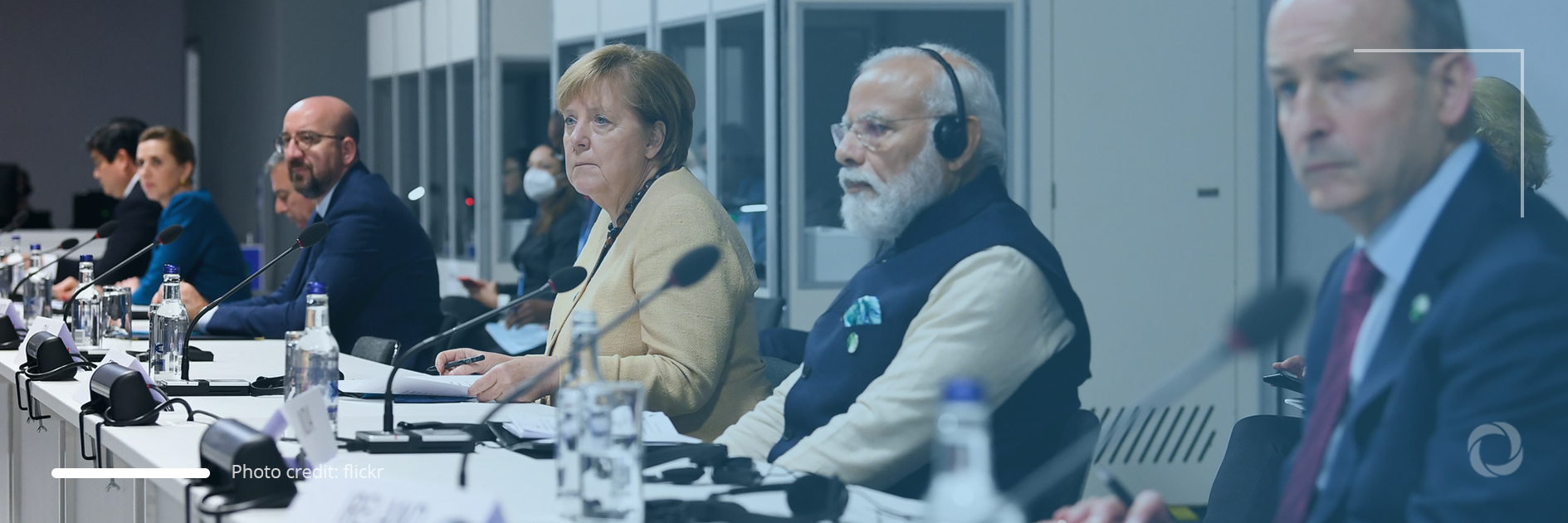As the biggest climate event, COP26 unfolds in the UK city of Glasgow amidst the ongoing climate crisis, pledges from world leaders that aim to prevent the crisis from escalating seem to be among the most sought-after commitments by activists and the media. After the US and the EU announced a global alliance to cut methane emissions, India, the world’s third-biggest gas emitter, has announced that it will reach net zero emissions by 2070. Although this pledge does not comply with the 2015 Paris Agreement, it has nevertheless aroused cautious optimism among experts.
India’s pledge
So far, India has been one of the largest economies to abstain from confirming its net zero-commitment and this has therefore given even more weight to the statement from Indian Prime Minister, Narendra Modi.

Apart from slashing greenhouse gas emissions to zero by 2070, Modi also gave five other pledges concerning Indian climate policy. He promised that India would be generating 50% of its energy from renewable resources by 2030 and would increase the amount of energy capacity not derived from fossil fuels to 500GW by the same date. Moreover, Modi declared that carbon emissions would be slashed by 1 billion tons between 2021 and 2030 and the economy would be decarbonized by 45% by 2030.
“This was a very significant moment for the summit. It’s a chance for India to show that it can deliver on both economic development and climate change,” said Nicholas Stern, chairman of the Grantham Research Institute on Climate Change and the Environment at the London School of Economics.
India’s commitment vs Paris Agreement
India’s commitment falls short of the Paris Agreement which assumes that all countries will be carbon neutral by 2050. Although the US and Europe have declared net-zero emissions will be reached by 2050, China and Saudi Arabia have stuck to their previous commitments to cut emissions to zero by 2060.
While India will not meet the Paris Agreement goal, experts argue that the plan announced by the country is feasible. According to a report issued recently by the New Delhi-based think-tank, Council on Energy Environment and Water, the realistic deadline for India to achieve zero net emissions is 2070-2080 as the country is still decades away from its peak of economic growth and energy consumption and its energy demand will grow much faster than that of other states, particularly as its population is expected to increase.
However, Modi’s announcement is consistent with the goal of avoiding a global temperature rise of more than 1.5C, according to researchers. The UN Intergovernmental Panel on Climate Change predicts that in order to curb global warming, the world has to reach zero carbon emissions by the middle of this century and then achieve net-zero greenhouse gas emissions by 2070.
Call for more climate financing
India, which is already one of the countries most affected by the climate crisis, has repeatedly expressed its concerns about insufficient financing to put into place climate change mitigation scenarios. Modi took advantage of the COP26 summit to reiterate yet again India’s stance that rich countries should raise more money to help developing countries to speed up the shift to clean energy.
“It is India’s expectation that the world’s developed nations make US$1 trillion available as climate finance as soon as possible,” he said.
This figure is 10 times higher than the annual climate finance target of US$100 million set by developed countries. However, Modi did not specify how much of the total amount should be allocated to India.
Where does India stand?
India is currently the third biggest carbon emitter, reported as being responsible for over 5% of global emissions. Yet, its contribution to cumulative emissions is much lower than that of richer countries as shown in the graph below.
Currently, India generates 70% of its energy from coal but solar energy is developing very quickly and in fact even more rapidly than previously predicted.
At the same time, India is one of the most vulnerable countries to climate change, experiencing floods, heatwaves, and disruptions to the rainy monsoon season.

